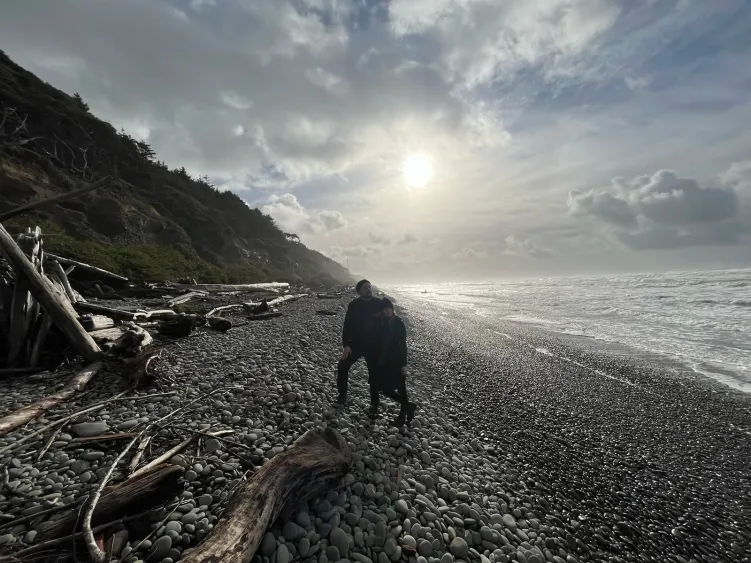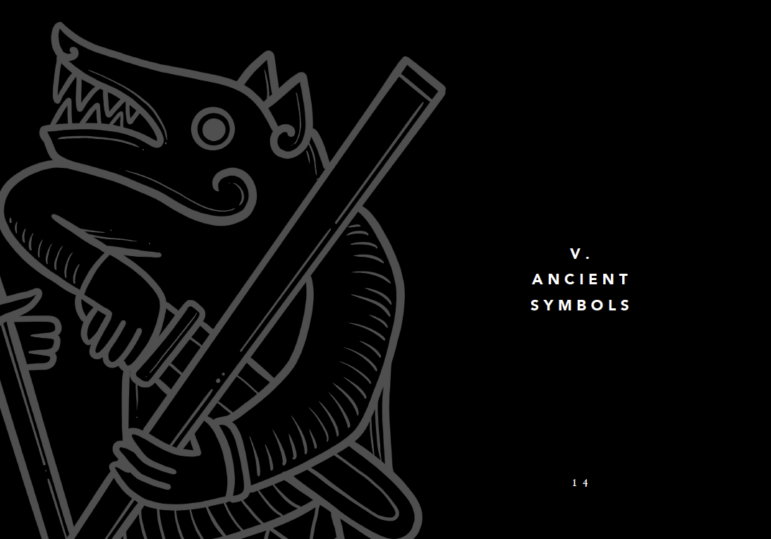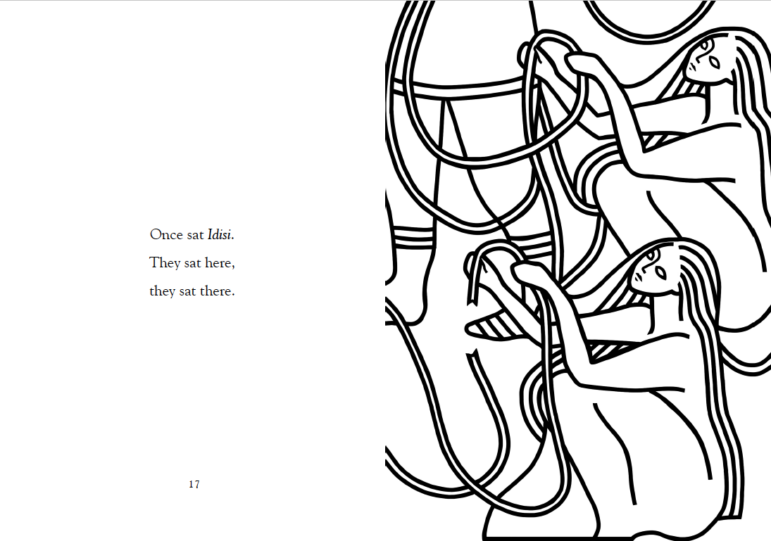
Something I have noticed after years of scouring both physical and digital spaces dedicated to the Old Religion is that, when it comes to books and other publications dedicated to the topic, there is not actually all that much to choose among. True, there might be a ton of different titles, but deep down, they all can be roughly sorted in two categories: academic literature on the one hand, and popular works on the other.
While, as an academic myself, I have no problem dealing with and utilizing the former, I am deeply aware that these kinds of publications remain difficult to access for most people. Many of these works are written in a stiff, overtly cerebral prose, and are filled with gnostic jargon, puzzling abbreviations, and never-ending footnotes.
Another issue with scholarly publishing is its cost: even the most famed and foundational texts are rarely printed at scale, or made available digitally, and when they are, the price tag on some of these frankly indispensable resources borders insanity. Many works of note, as well as precious primary sources, remain untranslated as well, or only partially or badly so.
On the other side of the academic fence however, one can find numerous popular works on just about every niche aspect of the Old Religion. While some of these are penned by truly intelligent and insightful individuals, or even legitimate scholars wishing to popularize their research, these often are either too surface-level or struggle to clearly highly and articulate their points.
Then there also are the truly awful books – those which anyone seasoned enough can tell, just by a terrible cover, are gonna be either just plain terrible, or worse, do nothing but rehash the same platitudes as the previous 20 popular books on the topic. (Looking at you, the “runes” section of just about every Witchy library).
Yet, even though these flaws are clear to the eyes of most, it is often low-effort and low-quality publications that get the most traction, and for good reason: if a reader are getting curious about something, what will they do? Head into the closest university library and delve into piles dusty 19th century volumes? Max out a credit card to get the privilege to read one or two articles sequestrated behind a publisher’s paywall? Or head to the local metaphysical shop and buy the first (and often sole) volume on the topic for 15 bucks?
Most people realistically cannot even choose their poison; they are merely able to choose how much effort, time, and money they are willing to fetch said poison, which will probably be defective or hard to administer anyhow.
And yet, all hope is not quite lost.
There are some people out there who are keenly aware of this problem and are working hard to mend the seemingly abyssal divide between the academic world and a general public hungry for wisdom and knowledge, people like Joseph Hopkins and Lauren Fountain.

J. Hopkins and L. Fountain in their natural Cascadian habitat. Used with courtesy.
Based in the mossy woods of Olympia, WA, Hopkins and Fountain established in 2022 the experimental publishing house Hyldyr (Middle English word for the elder tree). With a common background in philology as well as tech content creation, the pair decided to commit to bringing their skills to good use, namely to democratize knowledge of the Old Germanic religion and folklore.
The first project resulting from this vision was mimisbrunnr.info, a sleek, well-curated website presenting numerous useful resources and guides, particularly regarding translation of ancient sources. Online since 2016, the website is notable for its accessible design and prose, as well as its use of art and illustration, elements which have since become the cornerstone of Hyldyr.
“All items published by Hyldyr somehow fall within the triangle of art, ecology, and folklore, there’s nothing else out there quite like what we’re doing. Each original Hyldyr edition is a collaboration between artists and scholars, often on topics rarely presented to a general audience before,” the pair told The Wild Hunt in early December.
Leafing through the first two volumes of translations published earlier this year, one of Völuspá by Dr. Mathias Nordvig, and one of the Old English “Nine Herbs Charm” by Hopkins himself, I understand at once what they meant. Each volume is a small black and white booklet, a little bit bigger than a postcard, a few dozen pages long each, filled with exclusive text and illustrations.
Neatly and clearly organized in various easily digestible sections, the booklets are easy to read, almost playfully so. Readers won’t be met here by walls of text stretching for dozens of pages, but rather an airy, uncluttered, yet tastefully ornate layout where text and art work together to create an intellectually and aesthetically pleasing reading experience.
But while Hyldyr’s visual identity is what immediately meets the eye and sets it apart from other publishers, its textual contents are nothing to scoff at either. While some editors and translators fancy publishing texts with little to no critical apparatus, this is definitely not the case for Hyldyr’s products. Each of the texts translated are accompanied by a translator’s commentary, a separate introduction, information about manuscripts used, indexes, bibliographies, and more. On the top of that, the contents thereof hold up from a scholarly perspective as well.

Illustration taken from the Little Book of Viking Age Symbols. Art by Jacqui Alberts. Used with courtesy.
If everyone so far involved in the Hyldyr project is a scholar in his or her own right within the field of Old Norse studies, these dedicated individuals never let their credentials stand in the way of communicating their knowledge in an approachable fashion. Although the translations and commentaries are easy to read, and not cluttered with an unending mass of notes and references, they communicate scholarly sound concepts and perspective and delve headfirst into complex issues such as linguistics, source-criticism, codicology, and more. It might be difficult to believe, but Hyldyr manages to balance scholarship, art, and accessibility in a way few publications of its kind have ever been able to.
When asked if this hybridization of sorts was merely incidental or the result of careful consideration, Hopkins and Fountain unequivocally answer by the latter: “Our goal is to build publications that not only withstand scrutiny from specialists but remain readable, approachable, and even enjoyable (imagine that!) to non-specialists,” they said. “Lamentably, art-heavy publications often have little footing in scholarship, whereas strictly scholastic publications generally feature little to no art or adornment of any kind. We combine the efforts of academics and artists in a way that one rarely sees to engage both the mind and the eyes.”
![]()
We hate to keep asking, but it is serious. Costs have hit us too.
We are grateful to our readers for your support, however it manifests. Right now, we need readers who can help fund Pagan journalism to help us continue serving the community. This is the type of story you only see here. This is how to help:
Tax Deductible Donation | PayPal Donations | Join our Patreon
We remain one of the most widely-read news magazines within modern Paganism, and our reporters and columnists remain dedicated to a vision of journalism for and about our family of faiths.
You can also help us by sharing this message on your social media.
As always, thank you for your support of The Wild Hunt!
![]()
This approach seems so far to have worked out well for Hyldyr. In less than two years, the publishing house has found nearly a dozen resellers, including one in Europe, and has grown a significant online presence, including on the Etsy shopping platform. There, alongside the booklets, the publishing house sells custom-made paper products such as postcards and notebook,s as well as metal pins, all featuring some of the custom art produced specifically for the project.
Hyldyr’s approach to publishing is, according to Hopkins and Fountain, informed by their own closeness to the wild nature of the Pacific Northwest and their concern for environmental preservation and alternative small scale trading networks.
“We avoid plastics and non-biodegradable materials wherever and whenever possible,” they said. “So far, we’ve also avoided T-shirts, patches, and tote bags because we can’t find a combination of materials that we feel good about putting out in the world. Rather than sell through venues like Amazon, we try to stick to independent book stores and similar shops. All of our traffic is organic, meaning we don’t pay tech companies or online marketplaces for ads.”

A page taken from the Merserburg spells translation by J. Hopkins. Art by Rim Baudey. Used with courtesy.
Hyldyr will therefore rely mostly on digital word of mouth when they release, on December 8, three more volumes: an expended re-release of Nordvig’s Völuspá, a new translation of the Danish and Norwegian Rune Poems by the selfsame author, as well as a study and translation of the Old High German Merseburg Spells by Hopkins.
Next year will, according to Hopkins and Fountain, even busier: “We’re strongly inspired by the works of English polymath William Morris,” they said. “We’ll be publishing new editions of two of his proto-fantasy novels, The House of the Wolfings and The Roots of the Mountains.”
In addition, there will be the follow-ups of Dr. Nordvig’s rune poems translations, a volume on sacred grooves by Hopkins, an introduction on Slavic folklore by Fountain, an as yet top secret collaboration with Dr. Rune Hjarnø Rasmussen (of Nordic Animism) as well as an edition of one obscure yet fascinating medieval source in the form of… a coloring book!
When pressed further about their long term plans, Hopkins and Fountain remain evasive, hinting at the idea of ultimately producing multimedia content in addition to their physical products and online presence.
Whatever the future may bring, it is hard to deny that, in less than two years, Hyldyr has managed to establish solid foundations for such future growth. It is bound to be very interesting to see how their enthralling approach to democratize ancient Germanic lore will impact not only this field of study but individual knowledge seekers as well.
“Many who encounter Hyldyr items seem to have had no idea such things existed beforehand,” they said. “In that sense, each Hyldyr publication can serve as a key to a hidden yet lush world, a jumping-off point for further exploration.”
One can hope that the pair’s worthy endeavor will bear fruits and sow seeds beyond the confines of academia, and further than the endless evergreens of the Puget Sound.
Disclaimer: The article’s author has collaborated with Joseph Hopkins in the past on the latter’s Mimisbrunnr project, mainly as a translator of Old-Icelandic texts.
The Wild Hunt is not responsible for links to external content.
To join a conversation on this post:
Visit our The Wild Hunt subreddit! Point your favorite browser to https://www.reddit.com/r/The_Wild_Hunt_News/, then click “JOIN”. Make sure to click the bell, too, to be notified of new articles posted to our subreddit.